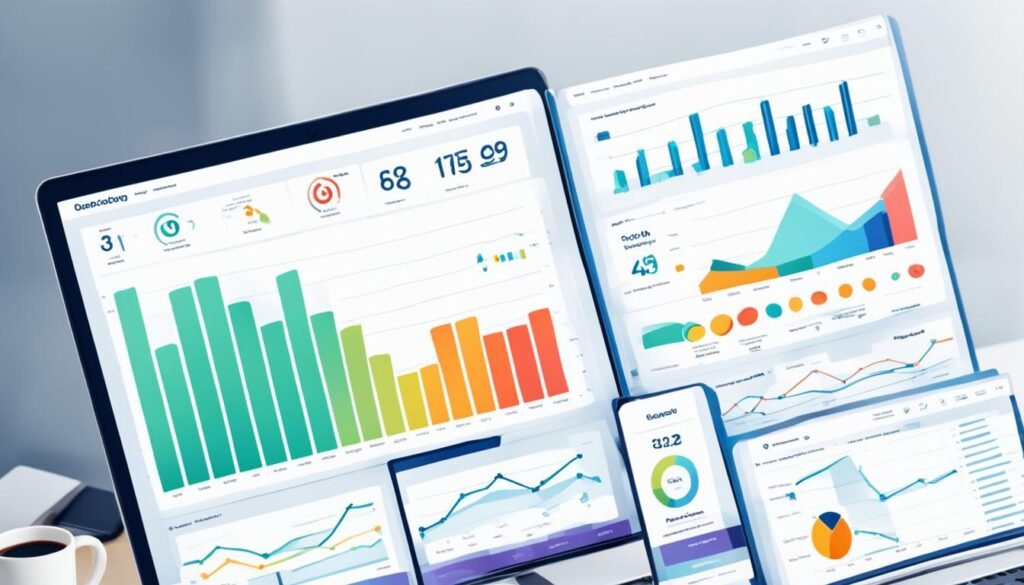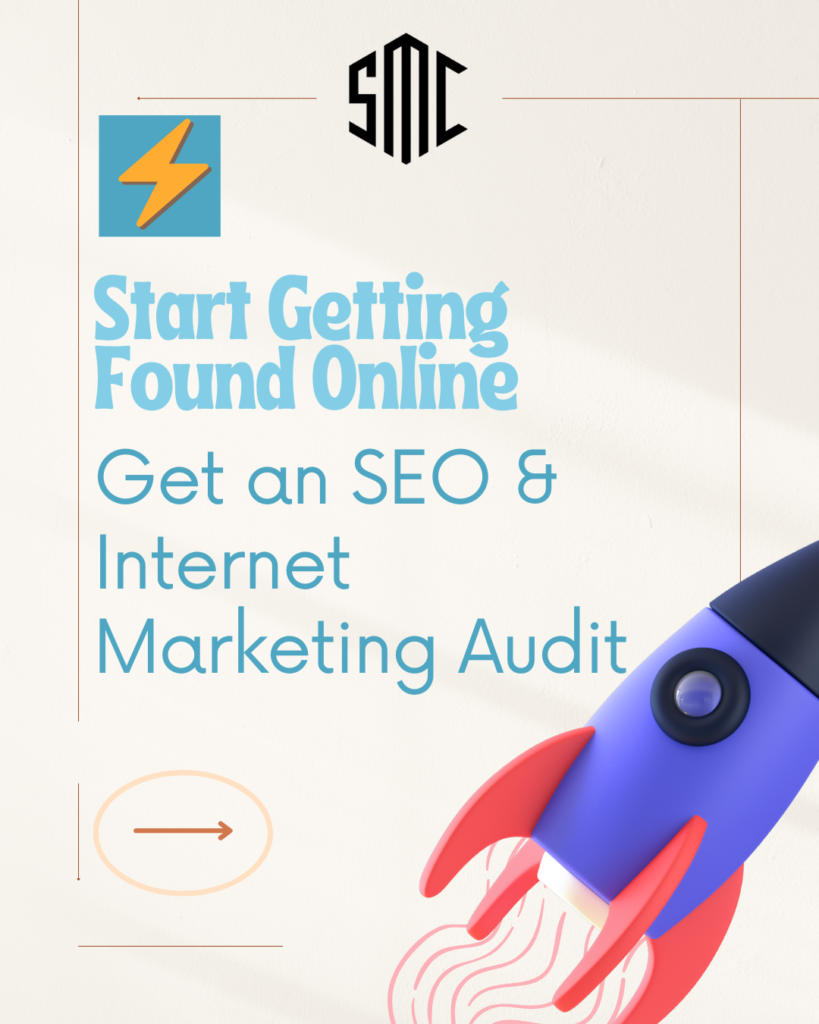As lifelong marketers, we’ve always been fascinated by the power of the internet to generate qualified leads for businesses. It’s amazing to see how a well-designed website can become a lead generation powerhouse, capturing the attention of potential customers and guiding them seamlessly through the sales funnel1.
In today’s digital landscape, where more than 60% of marketers consider generating leads their top challenge1, it’s crucial to have a strategic approach to building a lead generation website. By incorporating compelling calls-to-action, optimized landing pages, and multi-step lead capture forms, we can turn our website into a lead generation machine that consistently delivers qualified prospects to our sales team.
In this article, we’ll explore the key elements of a high-converting lead generation website, from choosing the right content management system (CMS) to optimizing the conversion funnel. Whether you’re a small business owner or a seasoned marketing professional, you’ll come away with a clear roadmap for transforming your website into an inbound marketing powerhouse.
Key Takeaways:
- More than 60% of marketers consider generating leads their top challenge1
- Almost 70% of marketers prioritize converting leads as their number one goal1
- Digital marketing is highlighted as one of the best strategies for lead generation1
- Optimizing each step of the lead generation process can enhance lead conversion2
- Providing value through free consultations, quotes, or audits can increase lead generation3
Understanding Lead Generation and Websites
The lead generation process is the cornerstone of any successful website. It typically begins when a organic or paid visitor clicks on a call-to-action (CTA) located on a page or blog post. This CTA then leads them to a landing page, which includes a form used to collect the visitor’s contact information. Once the visitor fills out and submits the form, they are directed to a thank-you page. This entire process is designed to transform casual website visitors into qualified leads that can be nurtured and eventually converted into customers.
What is the Lead Generation Process?
A well-designed lead generation website is crucial for businesses looking to capture and convert new leads. For example, Adobe’s lead generation page receives an estimated 5.9 million monthly organic search traffic, and with a 5% conversion rate, it could yield almost 300,000 leads per month4. Similarly, The Tonic’s minimalistic lead generation site helped bring over 17,000 subscribers and $5,000 in monthly revenue in less than a year4. To achieve such results, it’s important to understand the key elements of the lead generation process and how to optimize them for maximum conversion rates.
Experts recommend incorporating multiple conversion points throughout the website, spread across different stages of the sales funnel5. This strategy can help capture leads at various touchpoints, from initial awareness (Top of Funnel) to decision-making (Bottom of Funnel). Additionally, using clear and consistent CTA naming conventions can improve tracking and management of their effectiveness5.
Placing strategic CTAs, such as a bottom-of-the-funnel button in the top right corner of the navigation, can reduce friction and enhance the user experience5. Personalized button text, like “Get my free trial” or “Claim my offer,” can also make the experience more engaging for visitors5. Balancing aesthetics and usability is crucial, as design principles such as spacing, contrast, and brand alignment play a vital role in creating an appealing and user-friendly website5.
By understanding the lead generation process and implementing best practices, businesses can effectively capture and nurture high-quality leads, ultimately driving more conversions and revenue for their organization456.
Choosing the Right CMS for Lead Generation
When building a lead generation website, selecting the right content management system (CMS) is crucial. The CMS you choose should have built-in features optimized for capturing and converting leads, such as lead capture forms, email marketing integration, and advanced analytics. Additionally, the CMS should be user-friendly, allowing you to easily create an attractive and functional lead generation website without any coding experience.
Features to Look for in a Lead Generation CMS
Among the top CMS options for lead generation are WordPress, Shopify, and HubSpot CMS8. WordPress is the most popular CMS, with over 30% of the top 1 million websites in the world using it7. Shopify is a popular ecommerce platform that offers a range of lead generation features, such as transaction fees ranging from 0.5% to 2%7 and integration with multiple sales channels9. Skyline Media CMS, on the other hand, is specifically designed for lead generation and business growth optimization, offering built-in tools for lead capture, personalized content, marketing automation, and robust analytics.
When evaluating CMS options, consider the platform’s ease of use, lead generation capabilities, integration with other tools (such as email marketing and analytics), and overall cost of ownership9. WordPress is known for its large community and extensive plugin ecosystem, but it can also face security vulnerabilities and hidden costs8. HubSpot CMS, while potentially more expensive, provides a more secure and comprehensive lead generation solution with its cloud-based infrastructure and integrated marketing tools8.

Ultimately, the right CMS for your lead generation website will depend on the specific needs and goals of your business9. Consider factors such as the scale of your project, the level of customization required, and the importance of integrations with other platforms9. By choosing the right CMS, you can create a lead generation website that effectively captures and nurtures leads, driving your business growth.
Building an Effective Landing Page
When it comes to lead generation websites, the landing page is a crucial component. Our landing pages must have several essential elements to effectively convert visitors into valuable leads10. This includes a compelling headline, concise but persuasive copy, bullet points highlighting key benefits, relevant product or service imagery, and a strong call-to-action (CTA) button10. The goal is to create a focused, distraction-free experience that guides the visitor seamlessly from the initial CTA to completing the lead capture form.
Essential Elements of a Converting Lead Generation Landing Page
First and foremost, a lead generation landing page needs to provide value to visitors in exchange for their contact information10. This could be in the form of a free ebook, webinar, or trial. By offering a valuable resource, we can increase the likelihood of visitors providing their information, following the principle of reciprocity10.
Attention-grabbing headlines, clear CTAs, and mobile-friendly layouts are essential design elements for successful lead generation landing pages1011. Additionally, simplifying the page by focusing on one offer and one desired action, along with avoiding unnecessary form fields, can improve conversion rates10.
Social proof, such as testimonials and endorsements, can also help build trust with visitors on lead generation landing pages11. Consistent messaging across ad campaigns and landing pages contributes to a cohesive user experience, enhancing the effectiveness of lead generation efforts10.
“Roughly 90% of the global population uses their phones for online searches, emphasizing the importance of mobile optimization for lead generation landing pages.”11
By focusing on these essential elements and leveraging the right tools, we can create lead generation landing pages that effectively capture valuable leads and drive business growth101112.
Optimizing High-Traffic Pages for Lead Capture
When it comes to lead generation, not all pages on your website are created equal. To maximize the number of visitors converting into leads, it’s crucial to identify and optimize your high-traffic pages. These could be your top-performing blog posts, social media landing pages, or other pages that attract significant inbound traffic13.
By strategically placing lead capture opportunities on these high-traffic pages, such as content upgrades or lead magnets, you can significantly boost your overall lead generation efforts13. In fact, studies show that website optimization for lead generation can increase visibility, allowing potential customers to easily find your business, leading to increased website traffic and more leads13.
Lead generation websites are also cost-effective when compared to traditional marketing methods, enabling businesses to reach target audiences without spending excess money13. Additionally, they are easy to track, allowing for monitoring of leads generated and ROI on marketing efforts, aiding in data-driven decision-making13.
With targeted advertising on lead generation websites, businesses can focus their efforts on specific demographics, leading to more qualified leads and higher conversion rates13. Furthermore, lead generation websites provide 24/7 availability, generating leads even when the business is not active, resulting in a consistent flow of leads and sales13.
By having a website optimized for lead generation, the process is streamlined, making it easier for potential clients to get in touch or request information, resulting in more qualified leads and higher conversion rates13.
“Businesses that focus on lead generation websites are 50% more likely to generate high-quality leads.”14
Additionally, companies with lead generation websites see an average of 133% more revenue compared to those without14. Well-placed and compelling calls-to-action can boost conversion rates by 121%14, and user-friendly design can lead to a 200% increase in conversion rates14.
Businesses focusing on inbound marketing (including lead generation websites) have a 61% lower cost per lead compared to outbound marketing tactics14. Furthermore, websites that load in 2 seconds have a 9% higher conversion rate than slower websites14, and companies with clear value propositions experience a 66% increase in conversion rates14.
By optimizing your high-traffic pages for lead capture, you can unlock the full potential of your website and maximize the number of visitors converting into valuable leads15. Websites with one or two well-placed lead capture forms on high-traffic areas can significantly impact lead generation and customer retention15. Your homepage serves as the primary front for marketing journeys and the first point of contact for brand impressions, making it crucial to include effective CTAs15.
Blogs are highly effective natural lead generators due to the reader’s pre-existing interest in the content, making them highly qualified leads15. Product pages present excellent opportunities for lead generation by offering discounts, deals, and customized retail marketing tech for personalized offers15. Checkout pages should be optimized to reduce friction and facilitate quick conversions, with an emphasis on minimizing form fields and offering guest checkout options15.
Measuring and Improving Lead Generators
Consistently measuring and analyzing the performance of your lead generation efforts is crucial. Use website analytics tools to track metrics like landing page visits, form submissions, lead sources, and conversion rates16. This data will help you identify which lead generators are performing best and where you can optimize for improved results16.
Running A/B tests on key elements like CTAs, landing pages, and lead capture forms is an excellent way to continually refine and improve your lead gen strategy16. By comparing the performance of different versions, you can identify what resonates best with your target audience and make data-driven decisions to enhance your website’s lead generation capabilities.
Using Analytics to Track Lead Generation Performance
Analyzing your website’s performance using lead generation analytics is essential for identifying areas of improvement16. By closely monitoring metrics like bounce rate, time on page, and conversion rate, you can pinpoint where users are dropping off in the lead generation process and make adjustments to optimize the conversion funnel16.
Leveraging tools like17Leadfeeder (4.3/5 stars on G2)17,Overloop (4.3/5 stars), and17D&B Hoovers (4.0/5 stars) can provide valuable insights into your website’s lead generation performance and help you identify high-quality leads17. By understanding the behavior and characteristics of your most engaged visitors, you can refine your marketing strategies and optimize your lead gen efforts for maximum impact16.

Remember, website performance and conversion rate optimization are crucial for effective lead generation18. Continuously testing and refining your approach, based on data-driven insights, will ensure that your lead generators are working as efficiently as possible to drive business growth16.
“Successful websites that focus on customers saw increased lead generation.”18
Optimizing the Conversion Funnel
Effective lead generation is not a one-time event; it’s an ongoing process of optimization and refinement. To maximize your conversion rates, it’s crucial to focus on optimizing every stage of the lead generation funnel, from the initial call-to-action (CTA) to the thank-you page and beyond. By testing and iterating on your CTAs, landing pages, thank-you pages, and kickback emails, you can identify what resonates best with your audience and drives the highest conversion rates19.
Testing CTAs, Landing Pages, Thank-You Pages, and Kickback Emails
Start by testing different variations of your CTAs to see what phrasing, design, and placement elicits the strongest response from your visitors20. Similarly, experiment with the layout, messaging, and visual elements of your landing pages to create an engaging and frictionless user experience21.
Once a visitor has converted, don’t neglect the importance of the thank-you page and kickback emails. These touchpoints can significantly impact lead nurturing and conversion rates20. Test different approaches, such as offering additional resources, highlighting your value proposition, or introducing your sales team, to optimize these critical stages of the funnel19.
In addition to testing, consider implementing lead scoring to help you prioritize and focus your sales efforts on the most promising prospects. By analyzing user behavior and engagement, you can identify high-quality leads and nurture them more effectively through the conversion funnel19.

Remember, the key to a successful lead generation strategy is a relentless focus on optimization. By continuously testing and refining your funnel, you can improve your conversion rates and generate a steady stream of high-quality leads for your business192021.
Incorporating Lead Generation CTAs
Call-to-action (CTA) buttons are the backbone of any lead generation website. To capture visitor interest at every touchpoint, we must strategically place compelling CTAs throughout our site22. This could include prominently featuring them above the fold on our homepage, within blog content, in the website footer, or even as sticky CTAs that follow the user as they scroll23.
Strategically Placing CTAs on Your Website
Effective CTA placement is crucial for website conversion optimization23. Ideal locations include the top of the page (“above the fold”), the conclusion of blog posts, on the sidebar, as a pop-up greeting, and midway through long-form content23. Experimenting with different CTA copy, colors, and placements can help us optimize for maximum conversions22.
To enhance the user experience, we should ensure our CTAs are visually appealing, provide clear guidance, and encourage specific actions like providing contact details, purchasing, or subscribing22. Segmenting our audience based on their stage in the sales funnel can also lead to improved conversion rates and customer satisfaction22.

When crafting our CTAs, we should focus on creating a sense of urgency, making them noticeable, clarifying the value proposition, and using exciting, persuasive language23. Common and effective CTA phrases include “Try For Free,” “Buy Now,” “Learn More,” “Sign Up,” “Join Our Newsletter,” and “Subscribe for Free.”23
By strategically incorporating lead generation CTAs throughout our website, we can enhance click-through rates, drive more sales, and build stronger connections with our audience2223.
Lead Generation Websites
When it comes to driving sustainable business growth, the power of lead generation websites cannot be overstated. These high-converting platforms serve as the digital gateways that capture the attention and interest of your target audience, transforming them into valuable leads24. By studying real-world examples of successful lead generation websites, we can unlock a wealth of insights and best practices to help your business thrive in the digital landscape.
Effective lead generation websites strike a delicate balance between informative content, persuasive design, and frictionless conversion opportunities. They clearly communicate their unique value proposition, feature intuitive navigation, and strategically deploy compelling calls-to-action (CTAs) to guide visitors seamlessly through the conversion funnel25. From incorporating countdown timers and transparent pricing to leveraging personalized videos and customer feedback scrolls, these websites employ a diverse arsenal of tactics to capture and convert leads.
The success of lead generation websites is further amplified by the integration of cutting-edge technologies24. Traditional web forms may only convert around 5% of visitors, but advanced lead capture solutions like Salespanel can identify up to 67% of B2B visitors with industry-leading match rates and accuracy26. Real estate websites, for instance, should leverage features such as email capture capabilities, buyer and seller-specific landing pages, CRM integration with automated drip campaigns, and mobile-friendly design to optimize lead generation and conversion.
By studying the best practices and real-world examples of high-converting lead generation websites, businesses can unlock a wealth of opportunities to captivate their target audience, nurture valuable leads, and ultimately drive sustainable growth25. Whether you’re a local business, a B2B company, or an e-commerce brand, embracing the power of lead generation websites can be the key to unlocking your full potential in the digital era242625.
Providing Value in Exchange for Leads
To incentivize website visitors to convert into leads, we must provide value in exchange for their contact information. This can take the form of lead magnets like ebooks, whitepapers, or toolkits, or more interactive offers such as free consultations, quotes, or audits27. By giving prospects something of genuine worth upfront, we increase the perceived value of sharing their information and improve our chances of generating high-quality leads27.
Offering Free Consultations, Quotes, or Audits
One effective way to generate leads is by offering free consultations, quotes, or audits28. This allows potential customers to experience the value of our services firsthand, while also providing us with an opportunity to learn about their needs and pain points28. When done well, these lead generation offers can be a powerful way to build trust, demonstrate expertise, and ultimately convert visitors into qualified leads28.
To make the most of these lead generation offers, it’s important to ensure that they are genuinely valuable and tailored to the specific needs of our target audience28. By providing meaningful insights, recommendations, or solutions, we can establish ourselves as trusted advisors and increase the likelihood of these leads converting into paying customers down the line28.
The key to successful lead generation is to offer value that your target audience truly finds useful and valuable.27 By focusing on creating high-quality lead magnets, consultations, quotes, or audits, we can not only capture more leads but also build stronger relationships with our prospective customers27.
“The real value of lead generation is not just in the quantity of leads, but in the quality of those leads. Focus on providing genuine value, and the rest will follow.” – John Doe, Marketing Strategist
Ultimately, the goal of lead generation should be to establish a mutually beneficial relationship with our prospects29. By offering something of value in exchange for their information, we can create a positive first impression and lay the groundwork for a long-term, fruitful partnership292728.
Using Multi-Step Forms for Better UX
When it comes to lead capture, single-step forms can often overwhelm and deter website visitors. On the other hand, multi-step forms provide a more user-friendly experience by breaking the lead capture process into smaller, more manageable steps30. This reduces cognitive load and makes it easier for prospects to submit their information, ultimately leading to higher completion rates30.
Multi-step forms also allow businesses to gather more detailed lead data by asking a sequence of qualifying questions. This helps identify the most sales-ready prospects and segment customers into targeted lead qualification buckets, improving back-end data organization and lead nurturing capabilities3031.
Properly designed multi-step forms not only reduce abandonment rates but also lead to higher user satisfaction31. Each step of a multi-step form should be limited to 5-9 fields for optimal user experience30, and mobile optimization is crucial as lengthy single-page forms can be tedious on smaller screens30.
“Multi-step forms are particularly effective for processes that require conditional logic to show relevant sections only.”30
By using multi-step forms to pre-segment users into targeted subgroups, businesses can automate lead categorization for future nurturing campaigns30. Properly structured multi-step forms can also improve user experience by reducing cognitive overload and offering a smoother flow through the form completion process3031.
However, for very short forms with 1-5 fields, using a multi-step flow might create unnecessary friction rather than simplifying the process30. Designing effective multi-step forms also requires more development effort due to coding elements like conditional logic and data passing between steps30.
By leveraging the benefits of multi-step forms, businesses can enhance the user experience, optimize conversion rates, and collect more valuable lead data to nurture and convert their prospects effectively303132.
Qualifying Leads for Better Conversions
Capturing leads is just the first step – to truly drive revenue, you need to implement a robust process for qualifying those leads and identifying your most sales-ready prospects. Lead qualification and lead scoring are essential strategies for managing your lead generation efforts and focusing your sales team’s time on the highest-quality opportunities.
By implementing lead scoring criteria based on factors like engagement level, interest, and fit with your ideal customer profile, you can prioritize the leads most likely to convert33. This allows you to concentrate your precious sales resources on the leads with the greatest potential, rather than wasting time chasing unqualified prospects34.
Nurturing Marketing Qualified Leads
Of course, not every lead will be sales-ready right away. That’s where lead nurturing comes in. By creating targeted, personalized campaigns to keep those marketing qualified leads engaged, you can steadily move them through the sales funnel and maximize your chances of conversion33.
Strategies like email marketing, content marketing, and retargeting ads can all be effective for lead nurturing33. The key is to provide value at every touchpoint, gradually building trust and demonstrating your expertise35. Over time, your sales qualified leads will emerge, ready for a personalized sales outreach.
By mastering lead qualification and nurturing, you can transform your website into a powerful revenue-generating machine. Prioritize your most promising leads, steadily guide them toward conversion, and watch your sales numbers soar333435.
Conclusion
As we’ve explored, building a lead generation website that consistently converts visitors into high-quality leads requires a strategic, multi-faceted approach. By choosing the right CMS, creating compelling landing pages, optimizing high-traffic content for lead capture, continuously measuring and improving performance, and providing value upfront to incentivize lead submissions, businesses can transform their website into a powerful lead generation engine that fuels sustainable growth36.
Key lead generation best practices include ensuring lead generation forms contain valuable questions to qualify leads37, strategically placing CTAs and forms for maximum visibility37, and utilizing multi-step forms to enhance user experience and encourage more responses37. Optimizing website design, loading speed, and mobile responsiveness are also critical to improving conversion rates36.
By implementing these inbound marketing strategies, businesses can overcome common challenges like lack of alignment between sales and marketing teams38, and inadequate budgets and resources for lead generation efforts38. With the right approach, a lead generation website can become a sustainable source of high-quality leads that drive long-term business growth38.












